A pet peeve of mine is people who say that silent films are boring. It’s right up there with people who say that black and white films are boring. How the lack of sound, or the lack of color for that matter, make a shred of difference to a movie’s inherent worth or interest is truly beyond me. I’ll quote what a professor of mine once said to an obnoxious student when he complained about a play made up of rhyming couplets: “Your failure to appreciate the piece says more about your failure as a student than it says about the talent of the playwright.” Our failure to appreciate soundless or black and white movies says more about us and our fleeting attention spans than it says about the movies themselves. So here is a list of amazing silent films that might just grab your attention long enough to actually enjoy yourself.
Best Silent Films
6. Nosferatu (1922)
This is probably one of the creepiest movies of all time. The story is basically that of Dracula, so much so that Bram Stoker’s estate threatened to sue and director F.W. Murnau was forced to change the method of vampire death from staking to sunlight (which is from where the sunlight myth originated). The movie is dark and atmospheric, with an insanely frightening performance by Max Schreck, who needed next to no makeup or prosthetics to play his role as the vampire Count Orlok. There is something about the lack of audible dialogue and the aged appearance of the film that makes this movie all the more intense and terrifying. If you enjoy this movie, try watching Shadow of the Vampire (2000), which is a fictional account of the making of Nosferatu where actor Max Schreck is a real vampire.
5. Modern Times (1936)
Charlie Chaplin was one of the last hold outs when sound came to the movies. It was his belief that the minute the Tramp spoke would mean his death. So Chaplin made a silent film eight years after the advent of sound and well after “talkies” became the Hollywood standard. It proved to be one of the most innovative films, silent or otherwise, ever produced. While Modern Times is for the most part a silent film, Chaplin took advantage of sound technology for comedic effect. The Henry Ford like boss of the factory in which Charlie works appears on a screen to shout commands at his workers, the only man with a voice. And while Chaplin never speaks a word, he does have a fun little nonsense ditty that he sings at a restaurant near the end of the film. He sings beautifully, too.
4. Metropolis (1927)
If you don’t know the movie, you no doubt recognize the plot of a city/world divided into classes – the rich and powerful on the upper levels and the working poor who keep the city running hidden away on the lower levels. One of the most recent movies to do a new take on this is Elysium(2013), but you can see the plot used and re-used across the years. Metropolis is another one of those dark and atmospheric tales, with seriously impressive sets that seem to tower into infinity and a perfectly choreographed corps of extras that sway together as one organism, march like robots, or perform tasks in rhythmic repetition like the cogs of a machine. There is nothing not striking about Fritz Lang’s vision of the future. It will surprise you how visually impressive it is for an early, non-sound movie and how modern Hollywood, with access to all its impressive technology and special effects, seems to pale in comparison when it comes to imagination, ingenuity, and effect.
3. Silent Movie (1976)
Mel Brooks was the king of comedy in the 70s, so when Hollywood’s most successful comedic filmmaker wanted to make a silent movie, that’s exactly what happened. With all the zany shenanigans of any ordinary Brooks production, a cavalcade of celebrity cameos, and a multitude of classic comedy bits that pay tribute to the comedy greats, it’s a wonder that this movie doesn’t rate up there with more popular favorites like Young Frankenstein (1974) and Blazing Saddles (1974). Probably because it actually is a silent movie and modern audiences have an aversion to that kind of thing. But to be fair, it’s not a completely silent movie. While in all senses Mel Brooks stays true to the silent nature of his production, there is one joke in the film that required the use of sound to acquire the pay off – a single word, spoken to great effect by famous mime Marcel Marceau.
2. The Gold Rush (1925)
I tried to spread the love around a bit with this article. After all, I could just as easily have written a list comprised entirely of Buster Keaton films, but a little variety is important. Even so, I had to put Chaplin on the list twice, because he did truly create some of the most iconic movies of this era – as well as those with the most mainstream appeal for modern Hollywood audiences. Chaplin’s films are very modern-Hollywood in their structure and anonymous directing style. Chaplin was a great writer, performer, and actor, but a great director he was not. He knows how to tell and present a story on film, but personal artistic touches in the cinematography or framing or even angle is rare indeed. But that doesn’t detract from the treasure of a film The Gold Rush is, because it is truly funny and heartwarming and greatly entertaining. As with all Chaplin films, it showcases first and foremost the talent of its lead actor and The Gold Rush does this beautifully indeed.
1. The General (1926)
Those of you following this column might remember that I put The General on my list of romantic movies for Valentine’s Day. It is, in its own way, a quirkily romantic film, but that’s certainly not the main focus. Buster Keaton is my favorite silent era comedian for a number of reasons – his unsentimental and ironic comedy style, his innovation in the field of filmmaking and special effects, his unique method of delivering a visual joke, his astounding physical skill and comedic timing, and the deep and subtle expressiveness of his face, just to name a few – and The General not only showcases all of these reasons, but has a fast-paced and exciting plot too! It is narratively perfect, is one of the best examples of Keaton’s use of the long shot in comedy (“Tragedy is a close-up; comedy, a long-shot”), and contains an epic train crash scene that for a long time remained the most expensive sequences in film history. It is a damn fine film, both terribly funny and thrillingly exciting, and well worth your time.
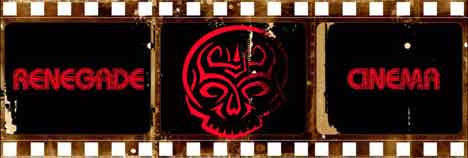

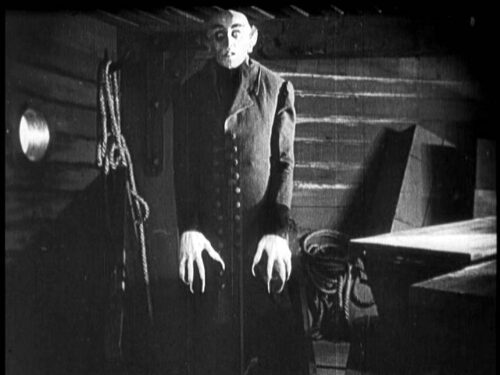


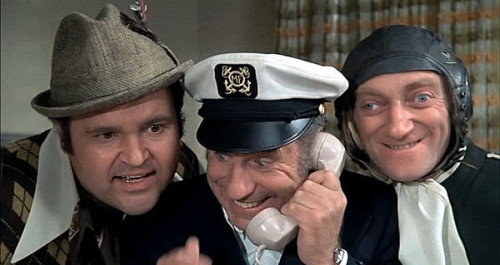

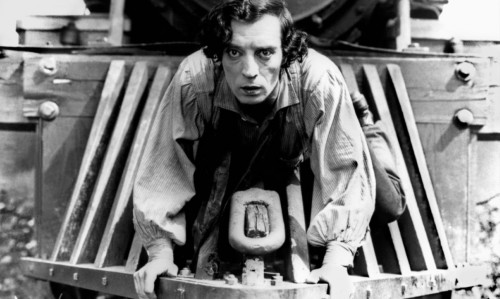


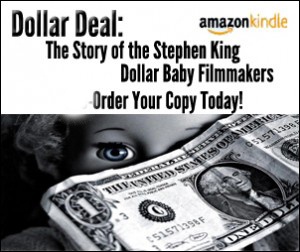


This is a pretty good list. Can't argue with it too much though I will admit I've always preferred Chaplin over Keaton.